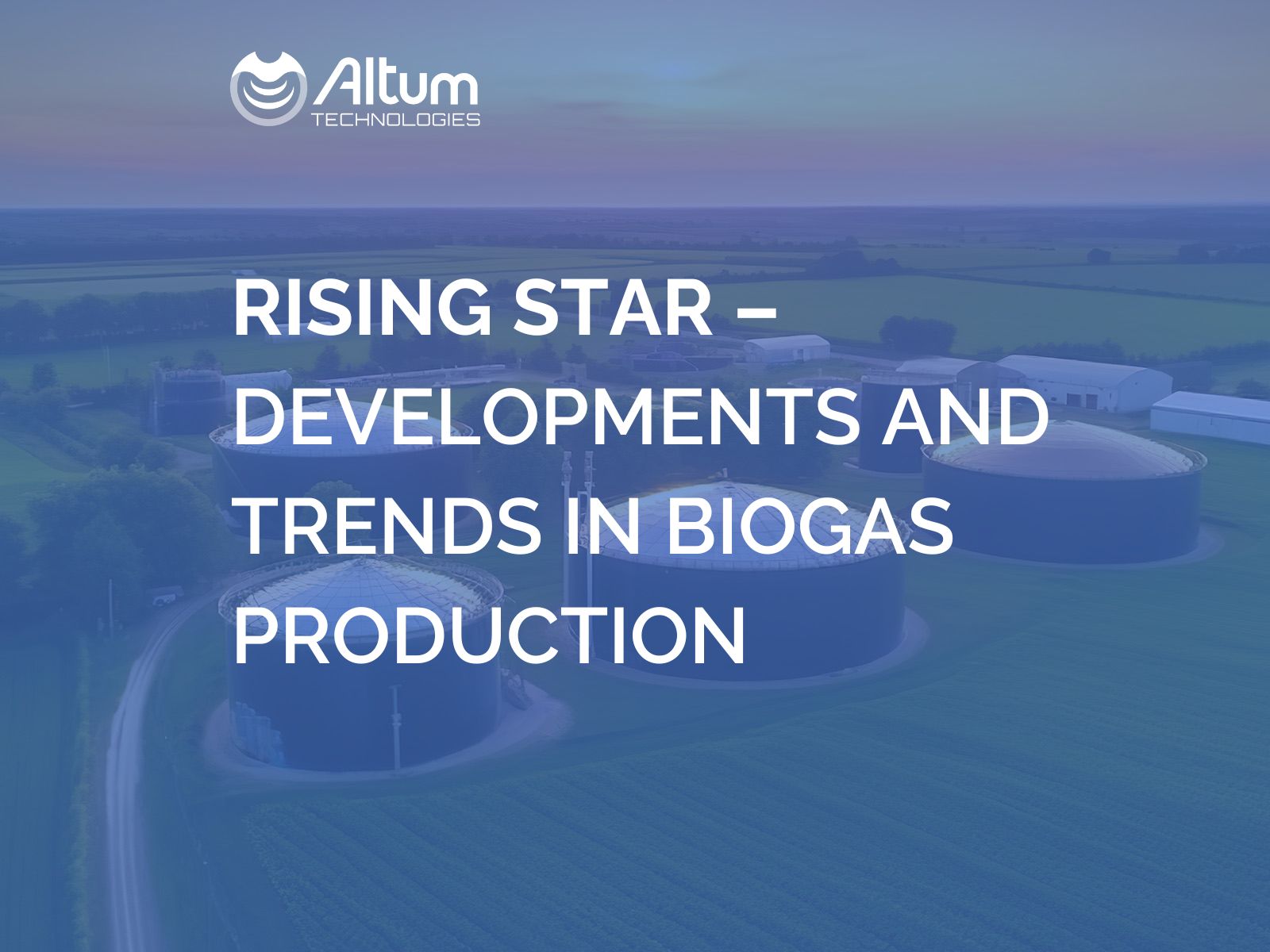Welcome back to our info package on current trends and developments in biogas production and utilization. As the urgent need to lower emissions and opt for renewable energy sources is a topic addressed globally, biogas is a crucial part of the solution to achieving a sustainable and low-carbon future.
The first part of our biogas article discussed the benefits and opportunities of using biogas for heat, electricity and fuel. This second part will introduce policies and governmental support for biogas production and utilization in Europe and North America, as well as introduce key technological developments driving biogas production forward. We will also discuss how Altum’s solution can help improve biogas production. Read on to learn more!
Policies and governmental support for biogas production
Governments and other political decision makers are crucial players in utilizing biogas more efficiently. Overall, decision makers around the globe are increasingly recognizing the capabilities of biogas as a renewable energy source and the benefits of its production. A key factor in this is that CO2 emissions are being consciously monitored, and carbon credit markets are in place in many regions. This encourages companies and countries to adopt sustainable practices by providing economic benefits tied directly to their carbon reduction efforts. Two big players in biogas production are Europe and North America, which hold approximately 60% of biogas production capacity (IEA).
The EU is pushing for renewable energy adoption with a target of 32% by 2030 and aims for climate neutrality by 2050 through the European Green Deal. Biogas production from waste streams is crucial in this plan, and Europe has around 20,000 biogas plants, mostly in Germany. Countries like Germany, Italy, and France support biogas with subsidies and incentives, while some countries like Sweden and Switzerland focus on using biogas for transportation.
In the US, biogas as RNG is expected to grow in transportation due to the Renewable Fuel Standard. Programs like the Rural Energy for America Program support renewable energy adoption in agriculture, and state-level policies also encourage biogas use.
In Canada, the Clean Fuel Regulations aim to reduce emissions by increasing renewable fuel use, such as RNG. Provincial programs in British Columbia, Québec, and Ontario support biogas production with specific policies and incentives.
Technological advancements and other developments in biogas production
To reach goals set for emissions reduction and build an energy system more reliant on renewable energy rather than fossil fuels, new technologies and innovations are required.
Some important advancements and developments in biogas production include:
New Feedstock Sources: Exploration of diverse feedstocks, including agricultural residues, industrial waste, and seaweed, will expand the raw material base for biogas production.
Anaerobic Digestion (AD) Innovations: Continued improvements in AD technologies, such as multistage and high-pressurized digestion, will enhance efficiency and output. Anaerobic digestion can also be used to produce organic fertilizers, which is an area that is being increasingly utilized.
Increasing Production Efficiency: Altum Technologies’ ultrasound solution is one technology that can further revolutionize biogas production. In many biogas production facilities, fouling, often caused by struvite, can cause big issues in the process. Our key focus is helping biogas producers and making their lives easier by making sure equipment, such as pipes, stay clean. This means less production stops and more production capacity. With one of our biogas customers, Ductor, we were able to decrease operation downtime from 2 hours/day to 2 hours/month. Read more about the case here.
Building the Future of Biogas Production
Biogas is a renewable energy source with significant potential, and there is global capacity and enthusiasm to grow its production and utilization. Technological advancements are ensuring that biogas production becomes even more efficient, and Altum is eager to contribute to this progress.
As we continue to innovate and improve biogas technologies, the environmental and economic benefits will become even more pronounced. The collaboration between governments, industries, and technology providers like Altum is essential in overcoming current challenges and unlocking the full potential of biogas.
Thank you for joining us in exploring current developments and trends in biogas production. Stay tuned for more updates and insights by following us on LinkedIn.
Want to find out more about using ultrasound in your biogas production process? Don’t hesitate to contact our experts for more information.

